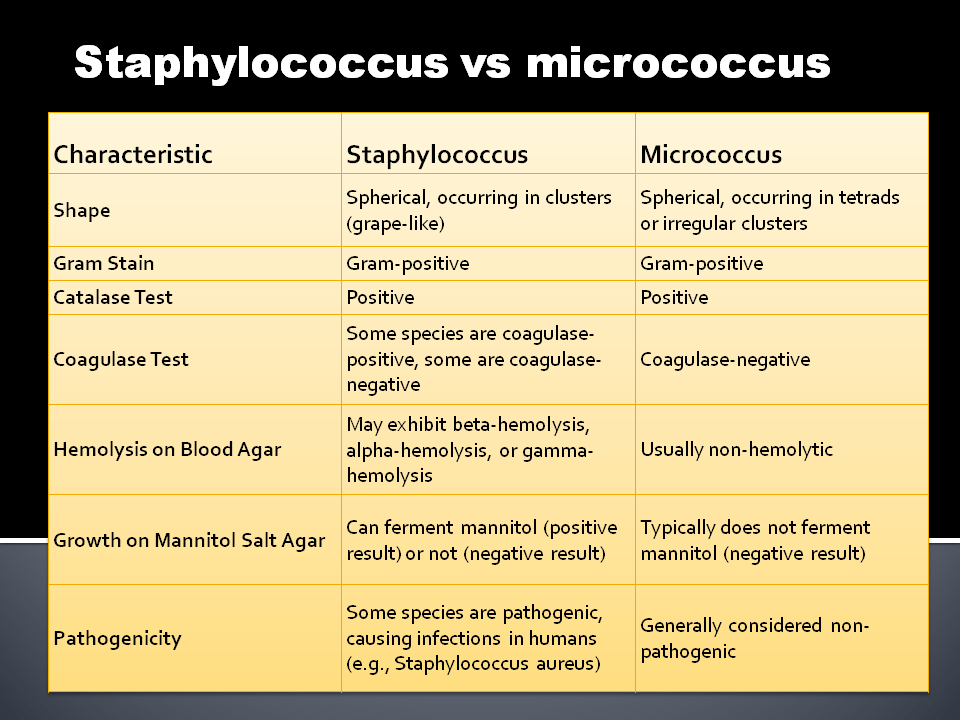Here you will learn about the Staphylococcus vs micrococcus.

Staphylococcus and Micrococcus are both genera of bacteria that fall under the phylum Firmicutes. While they share some similarities, but there are ten key differences between them. Here’s a brief comparison:
Staphylococcus characteristics
- Shape: Spherical (cocci).
- Arrangement: Occurs in clusters resembling grapes.
- Gram Stain: Gram-positive.
- Catalase Test: Positive (produces catalase enzyme).
- Coagulase Test: This can be positive or negative, depending on the species. Some species, like Staphylococcus aureus, are coagulase-positive.
- Hemolysis on Blood Agar: May exhibit beta-hemolysis (complete hemolysis), alpha-hemolysis (partial hemolysis), or gamma-hemolysis (no hemolysis).
- Growth on Mannitol Salt Agar: Can ferment mannitol, leading to a change in the color of the medium (yellow) due to acid production.
- Pathogenicity: Some species are pathogenic and can cause various infections in humans, including skin infections, respiratory infections, and food poisoning.
- Common Species: Staphylococcus aureus, Staphylococcus epidermidis.
Micrococcus characteristics
- Shape: Spherical (cocci).
- Arrangement: Occurs in tetrads or irregular clusters.
- Gram Stain: Gram-positive.
- Catalase Test: Positive (produces catalase enzyme).
- Coagulase Test: Negative (generally).
- Hemolysis on Blood Agar: Usually non-hemolytic.
- Growth on Mannitol Salt Agar: Typically does not ferment mannitol (no change in color of the medium).
- Pathogenicity: Generally considered non-pathogenic. Micrococcus species are usually harmless and are commonly found in the environment, on the skin, and in the respiratory tract.
- Common Species: Micrococcus luteus is a commonly studied laboratory strain.